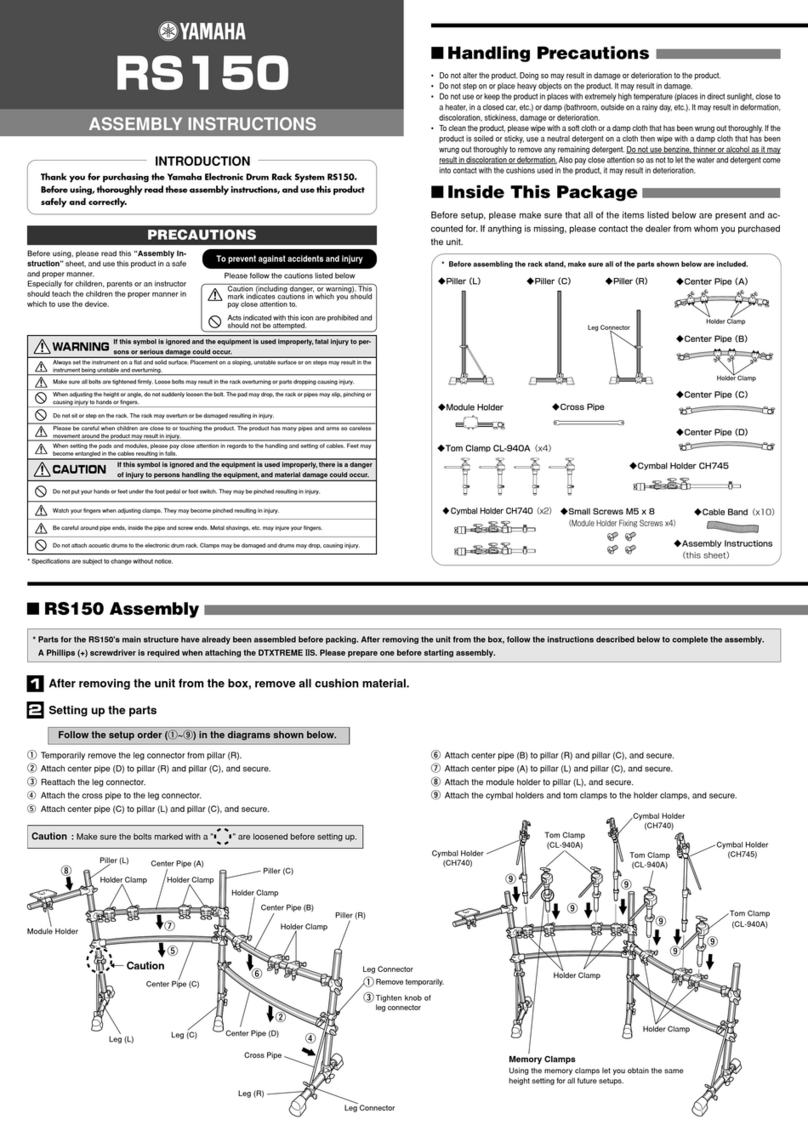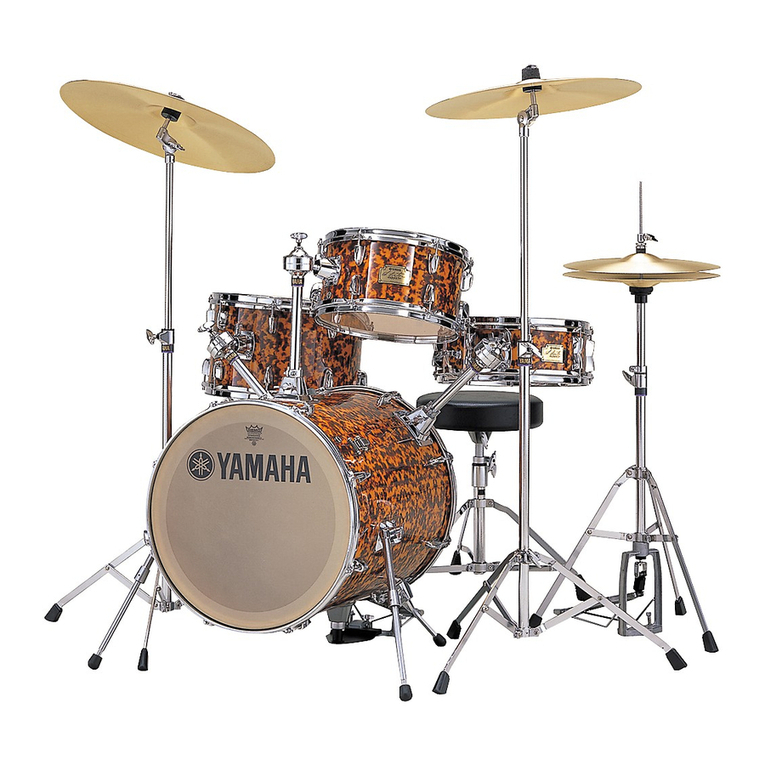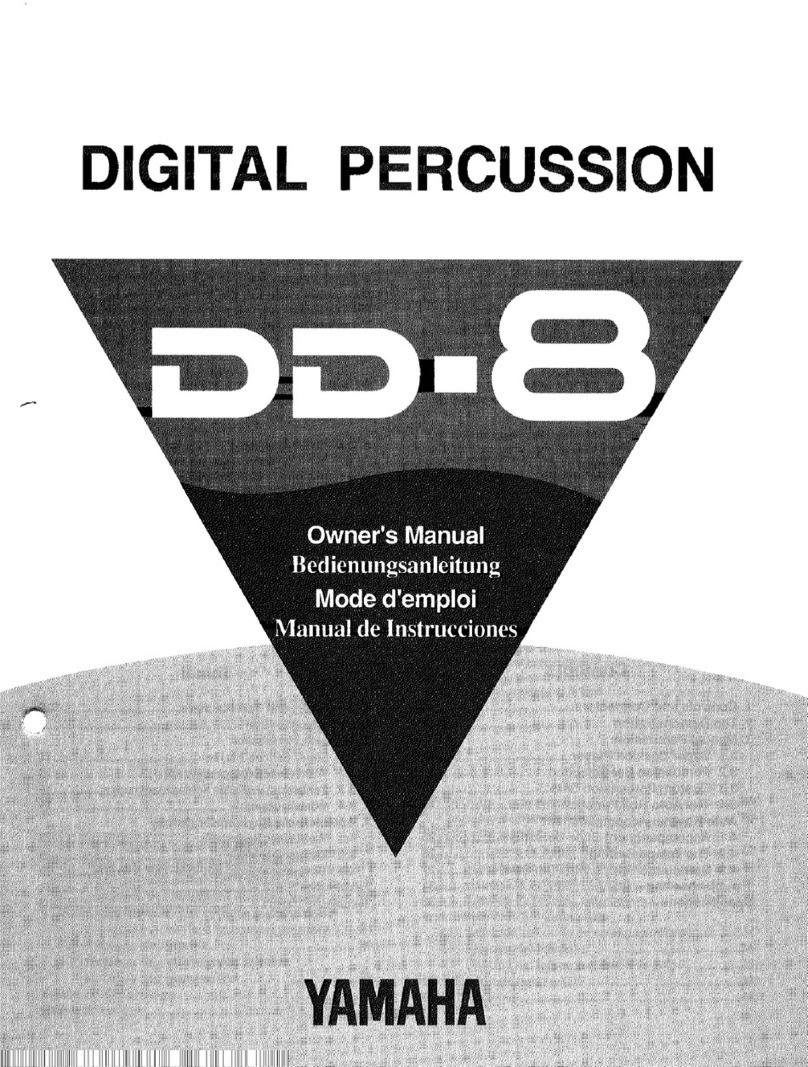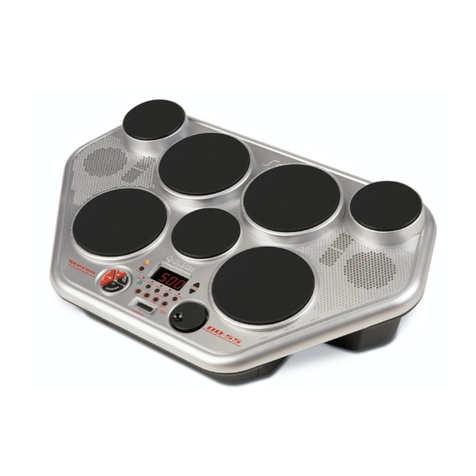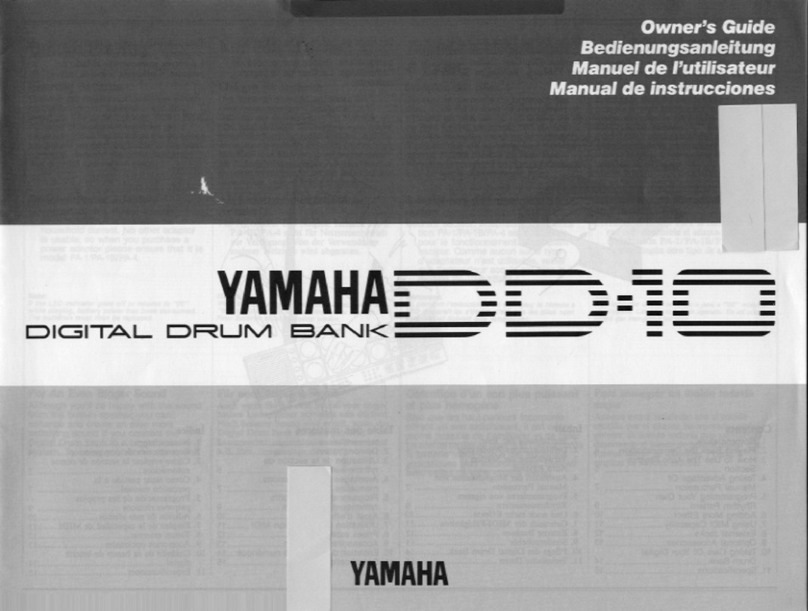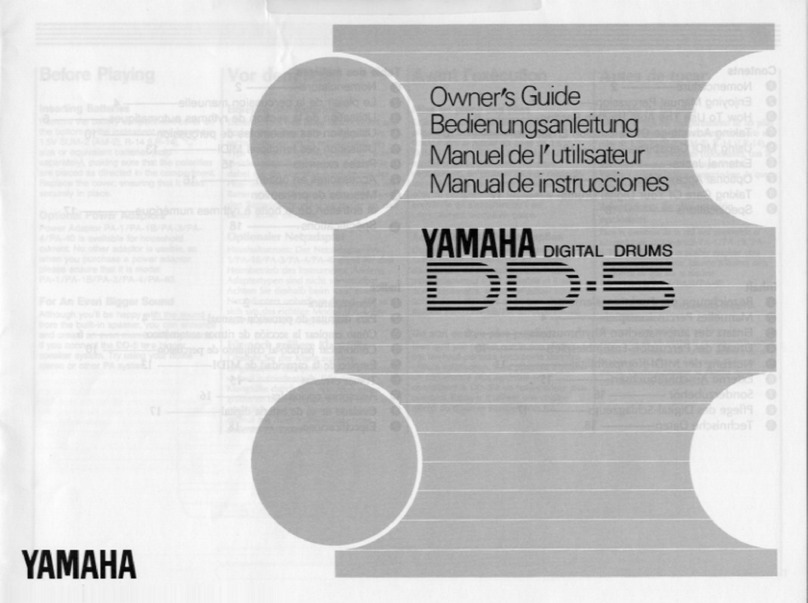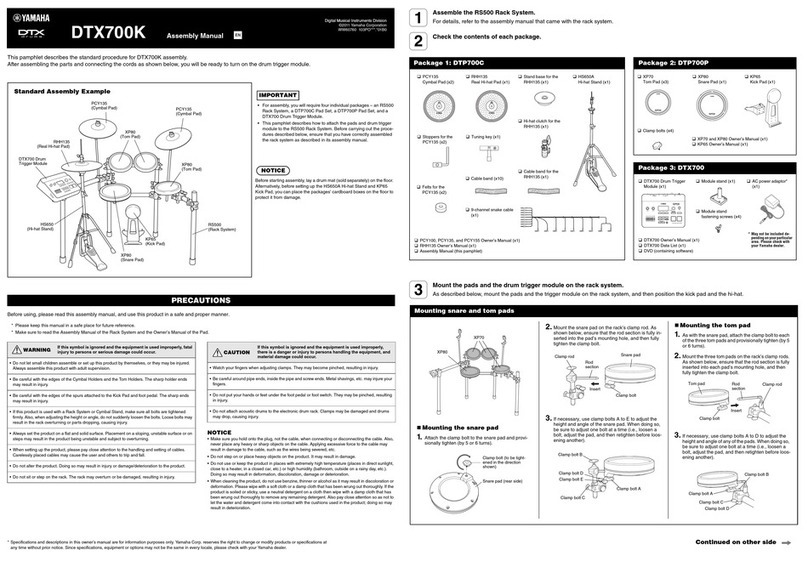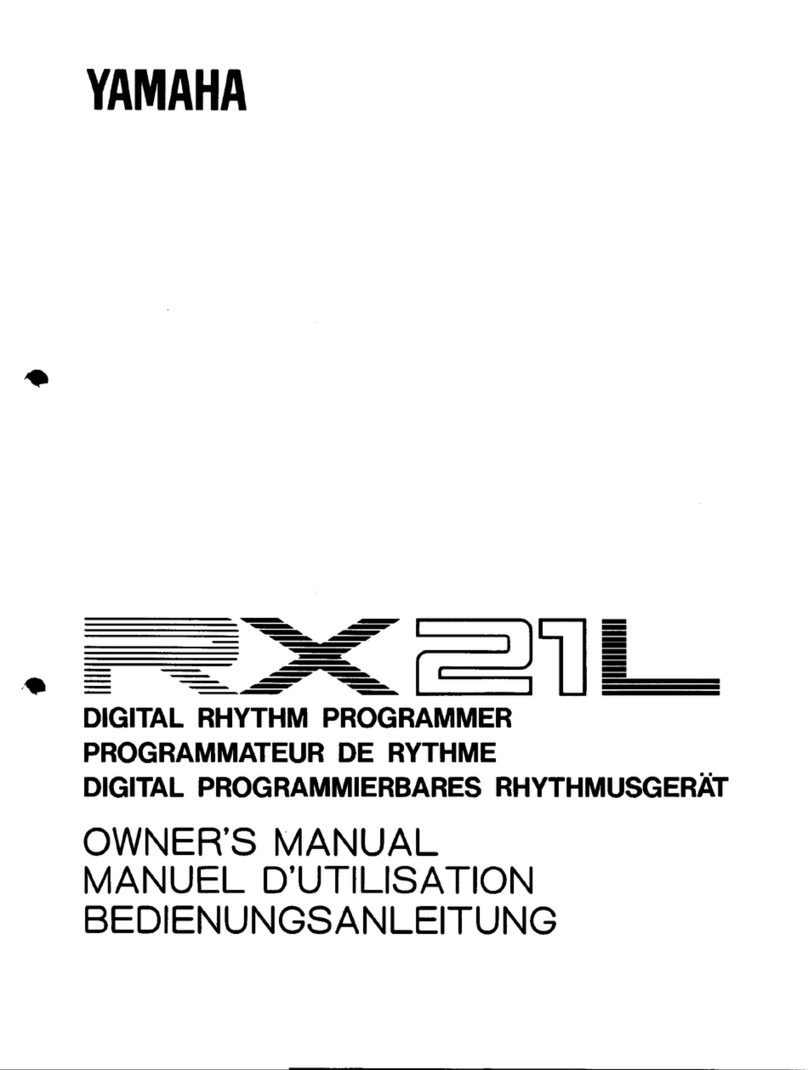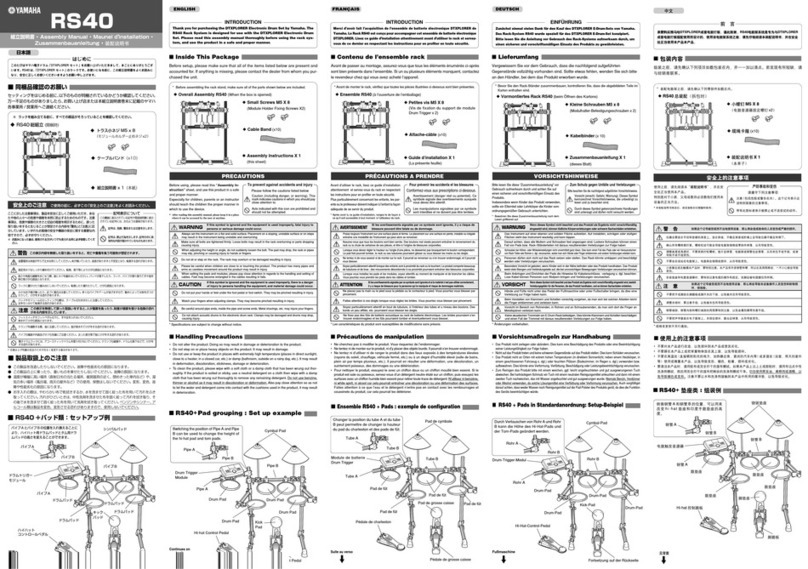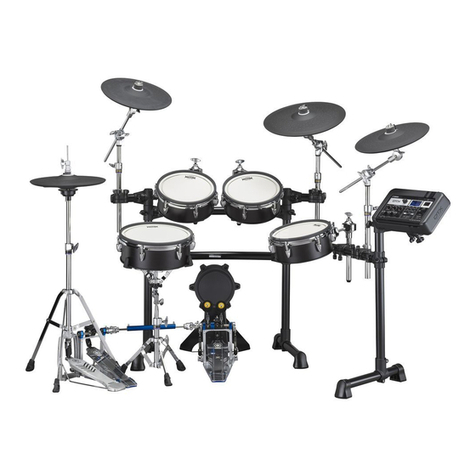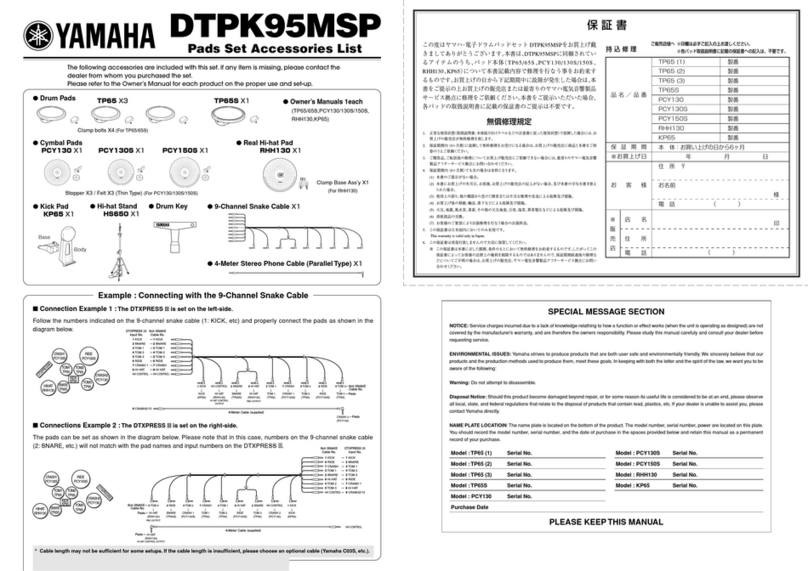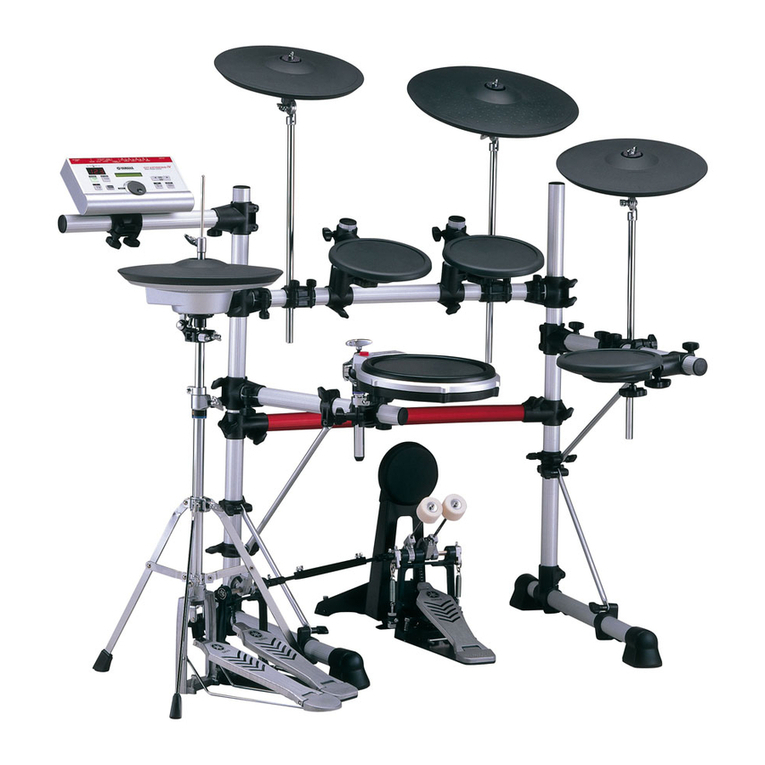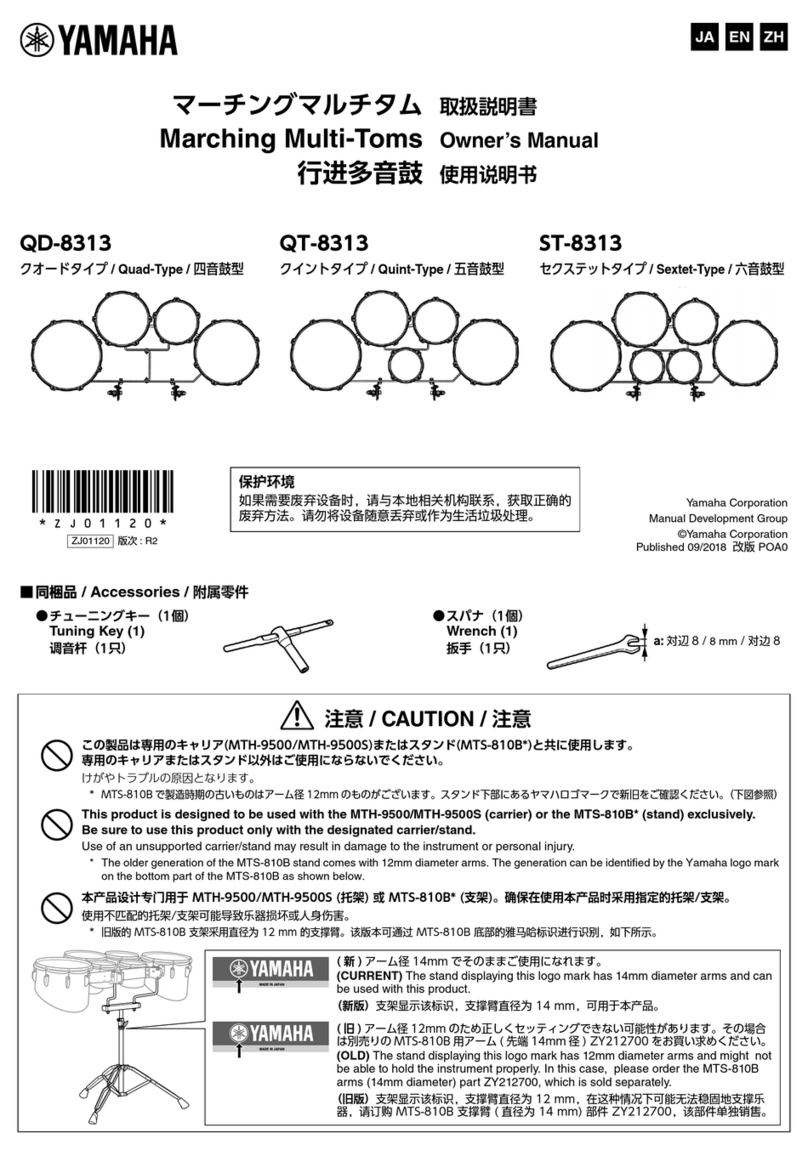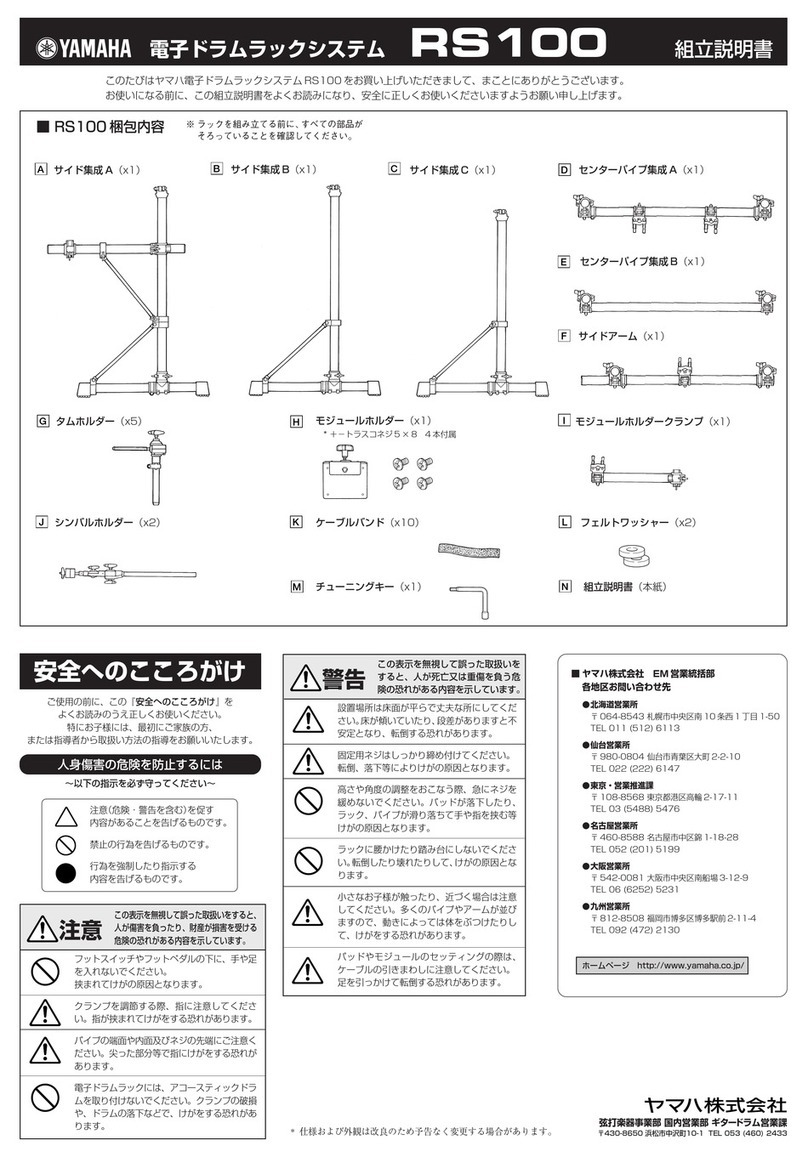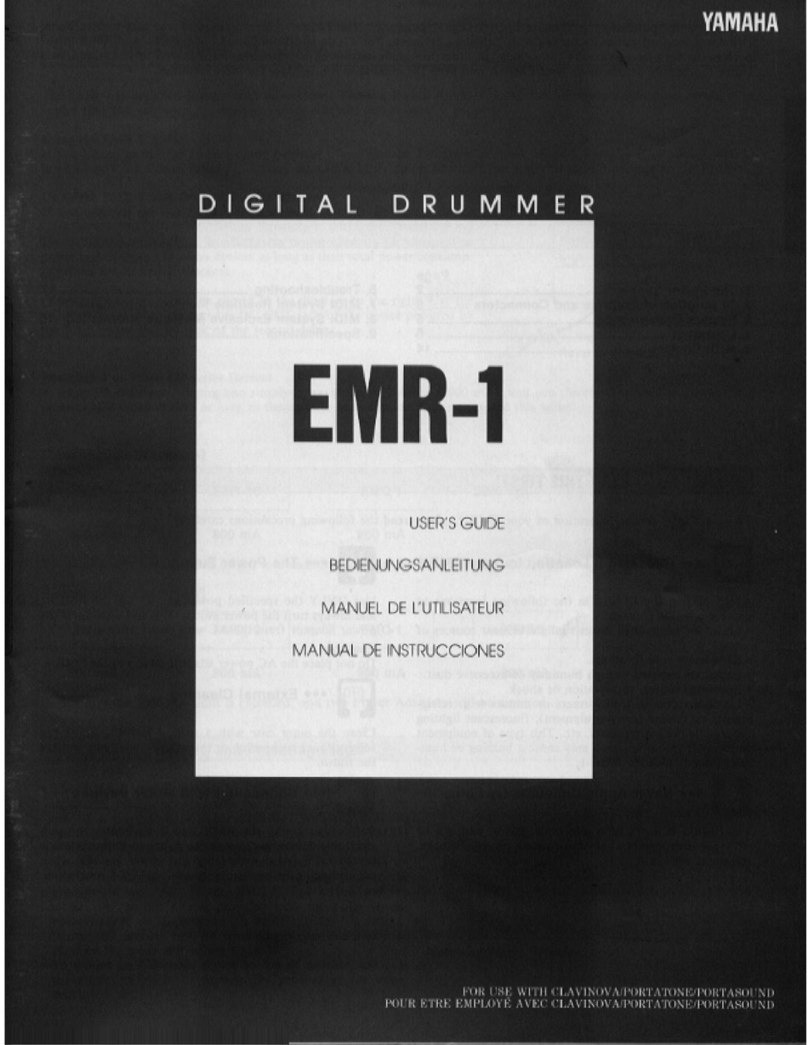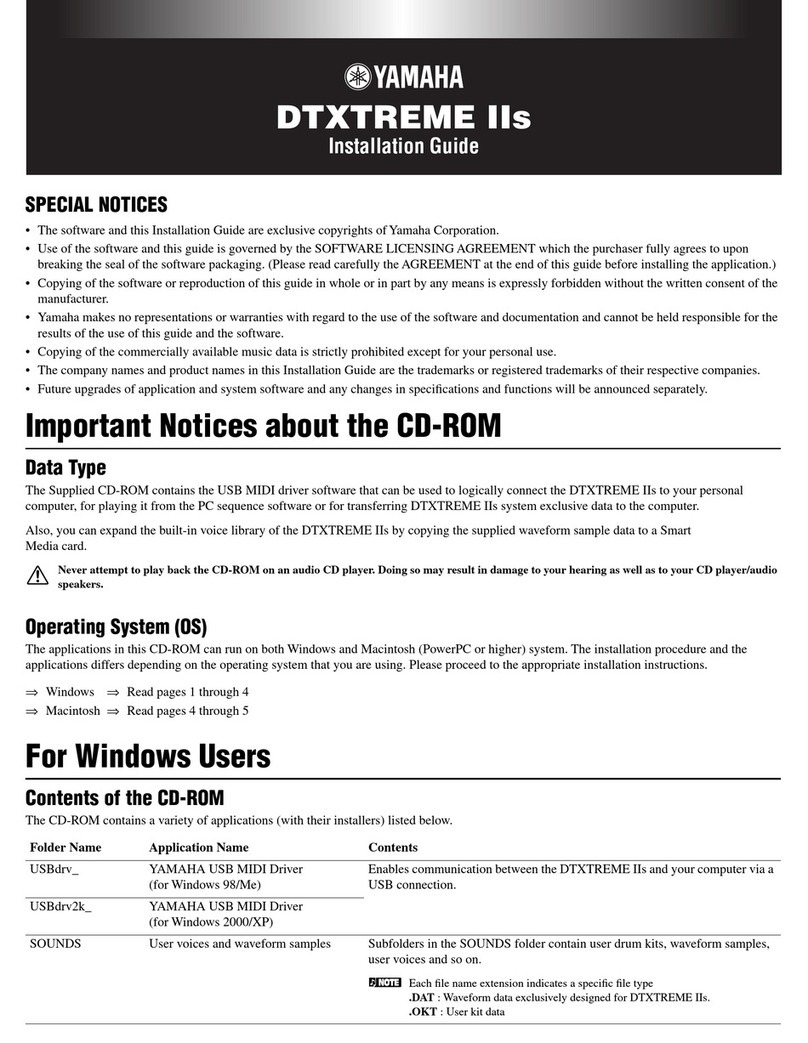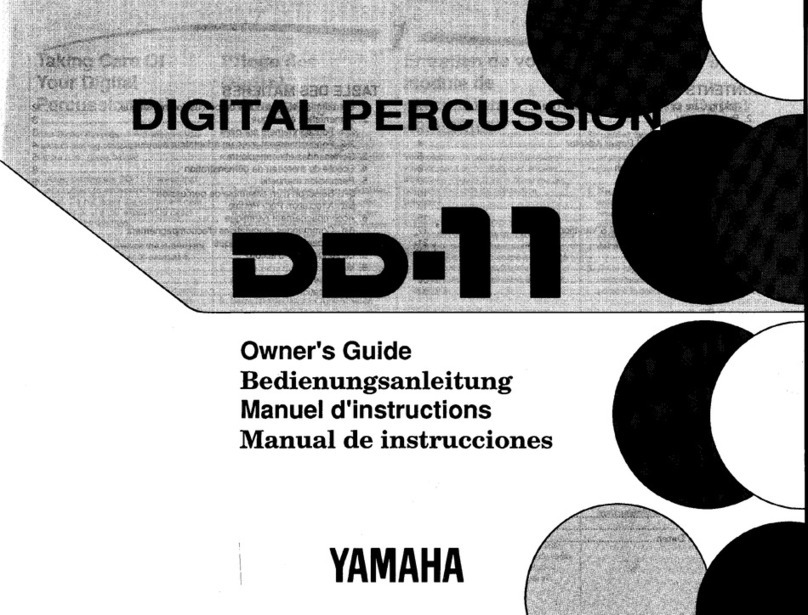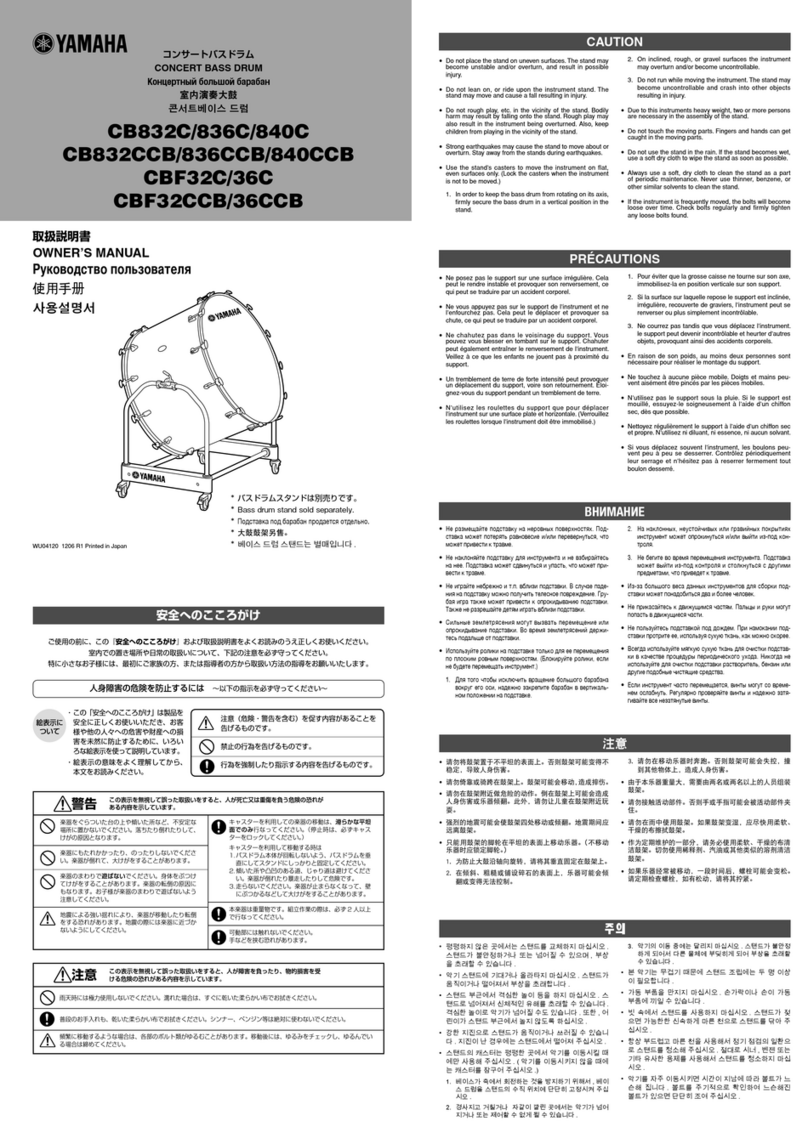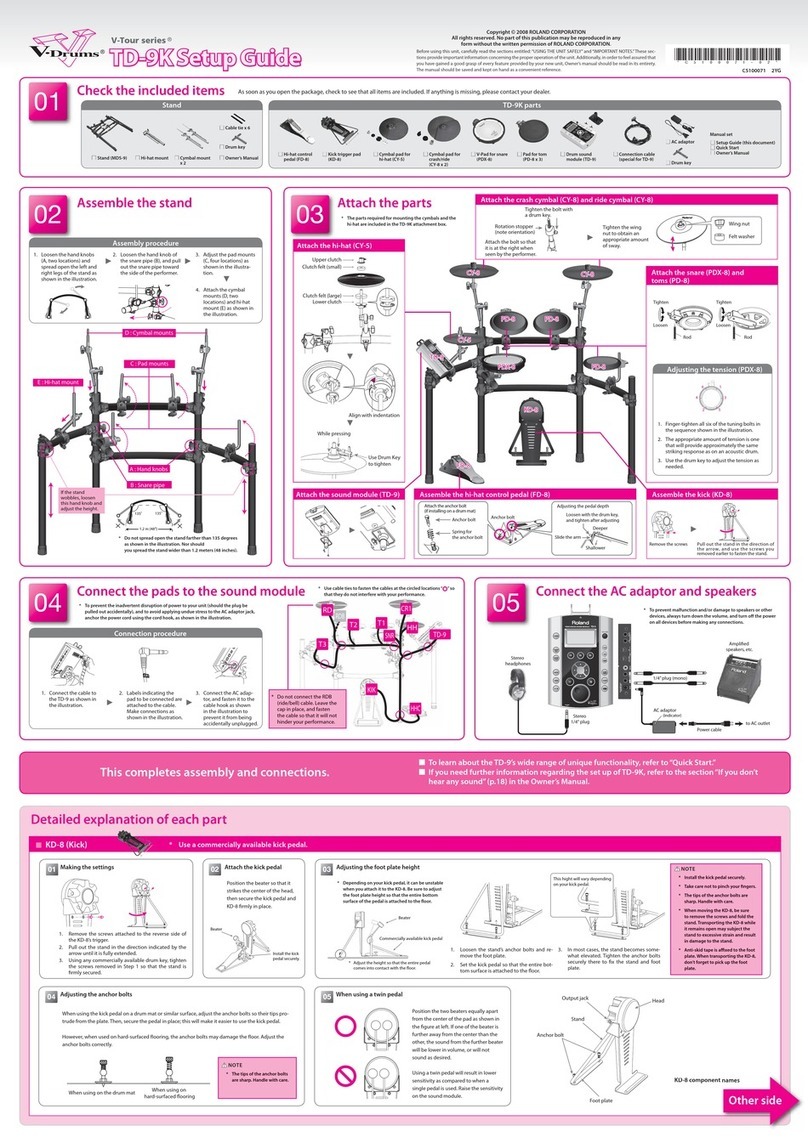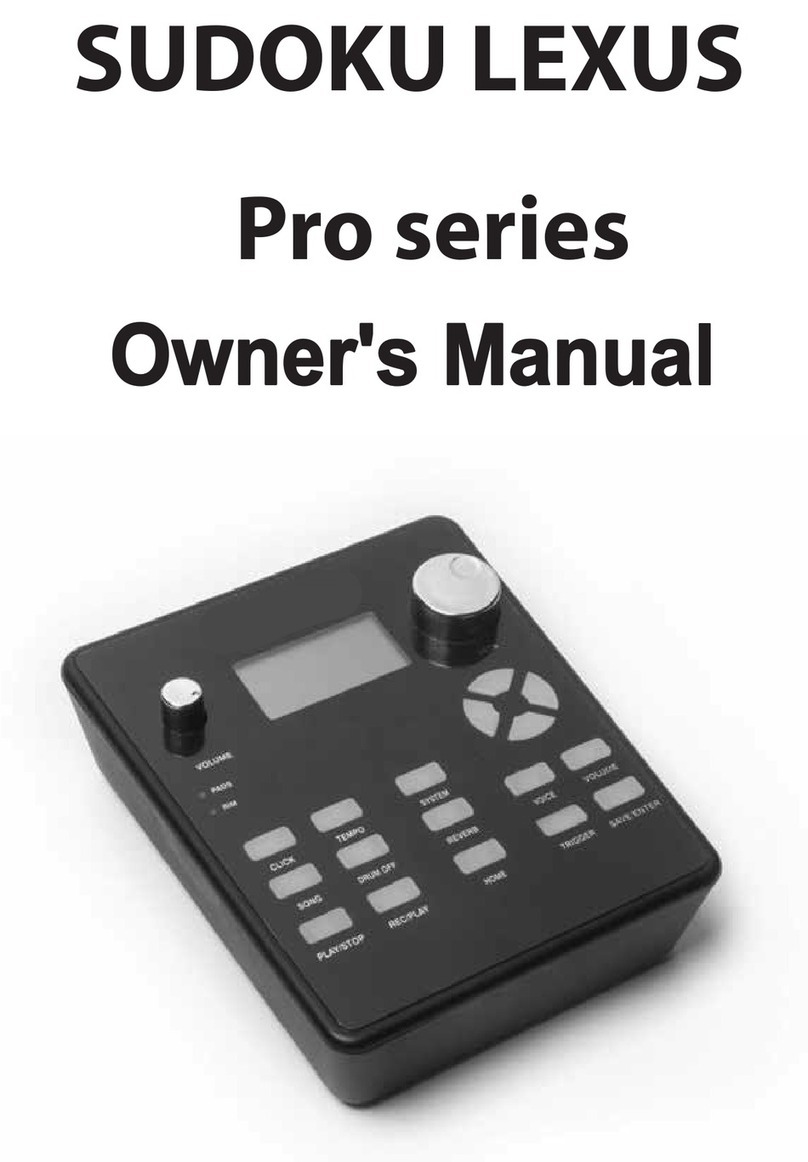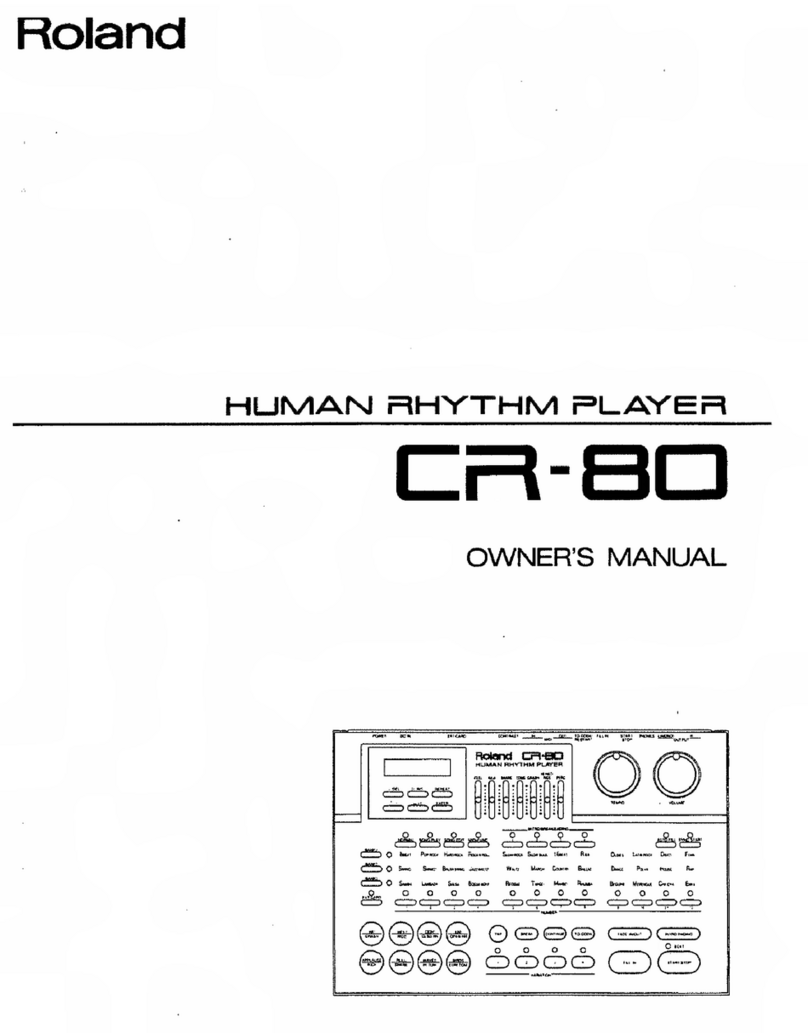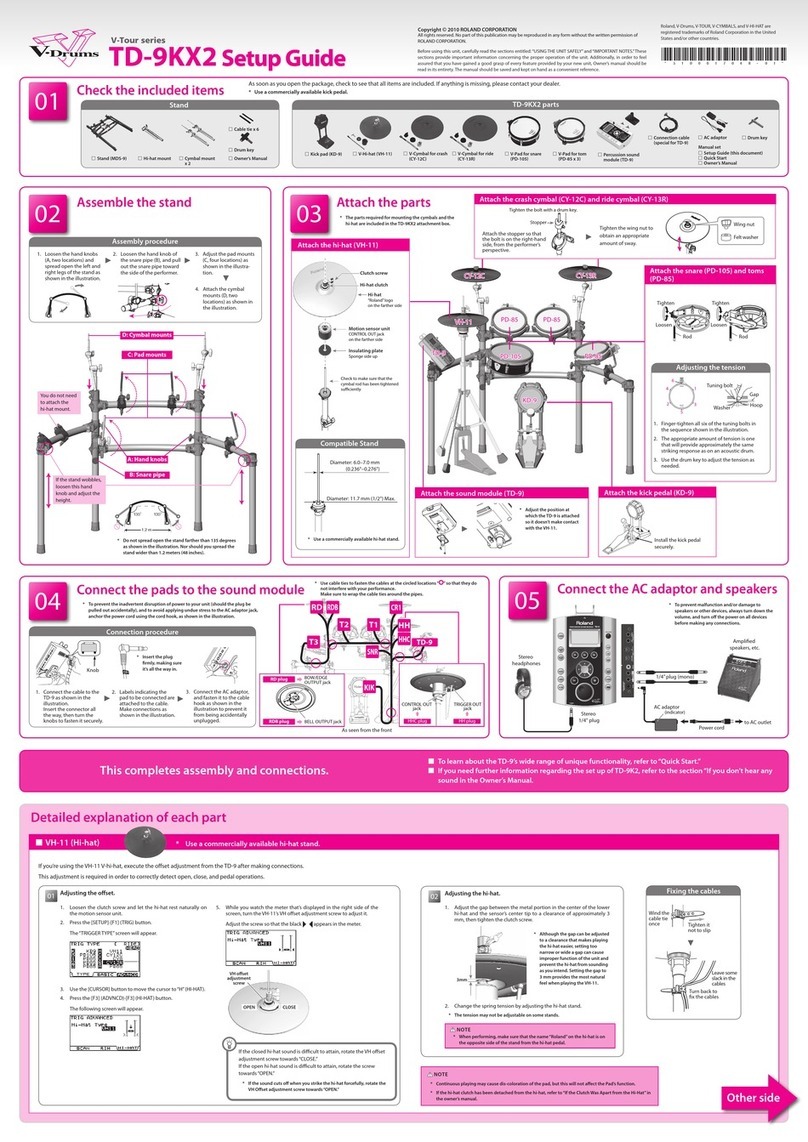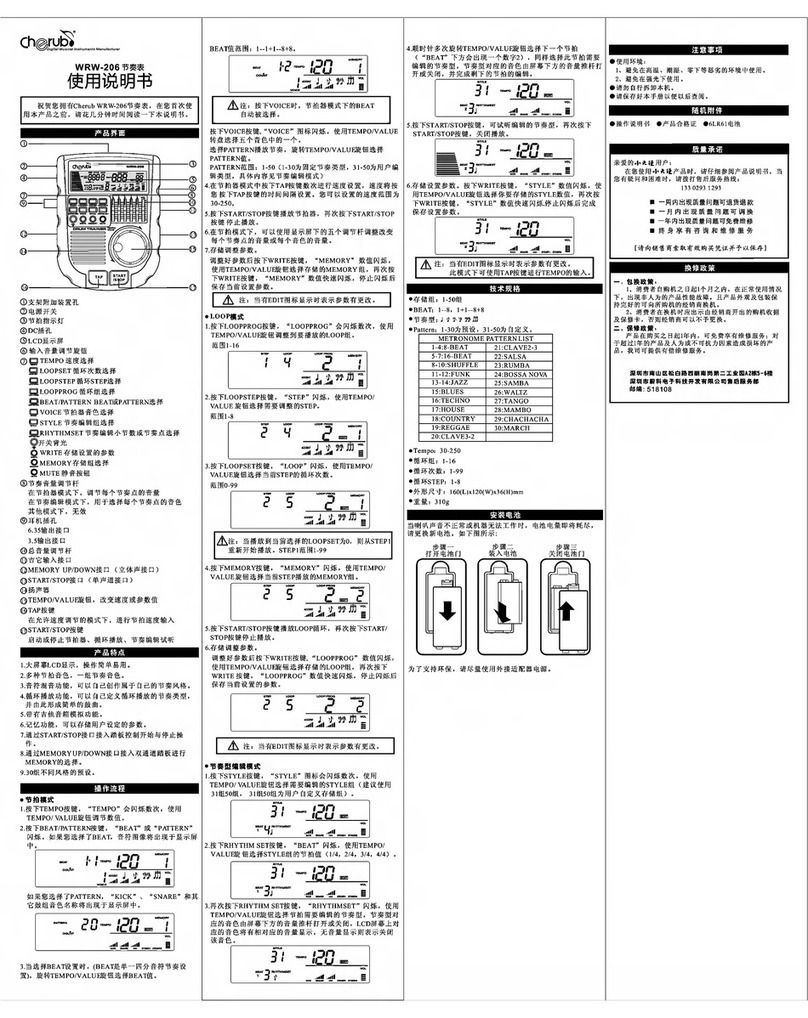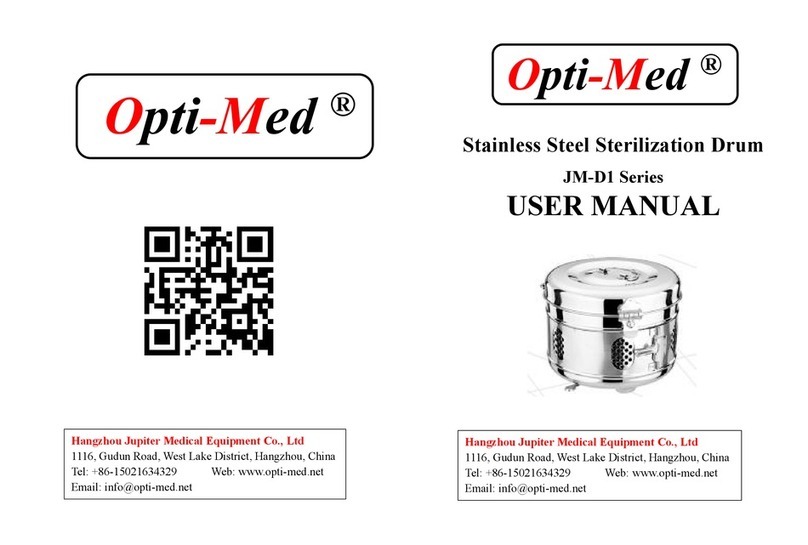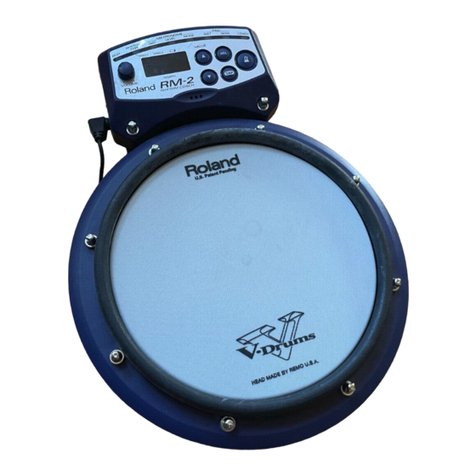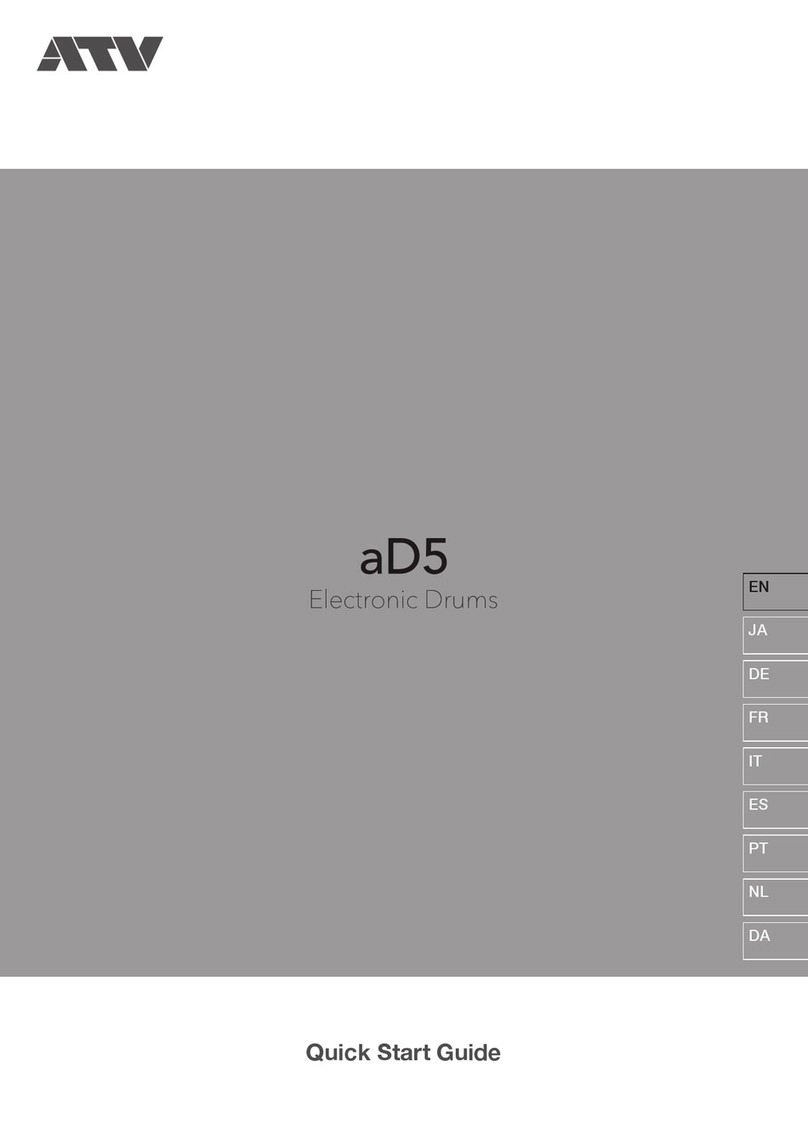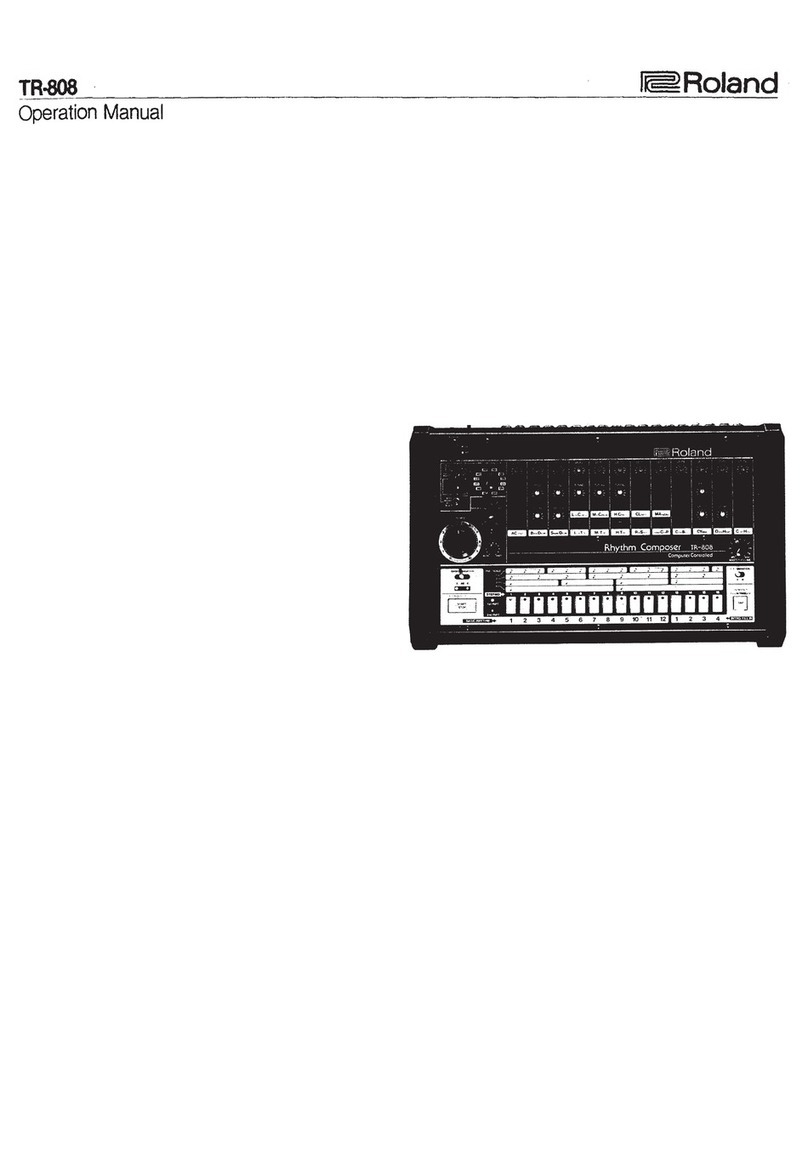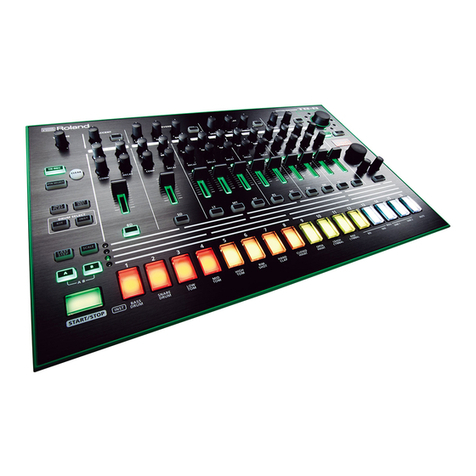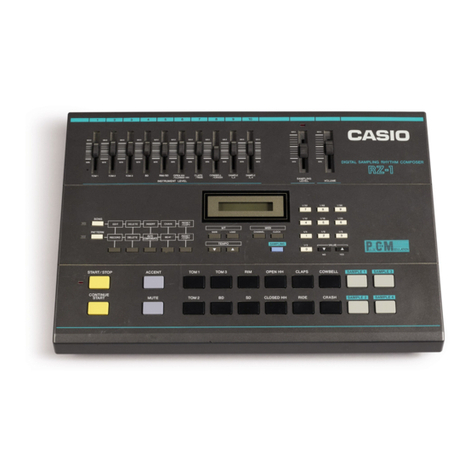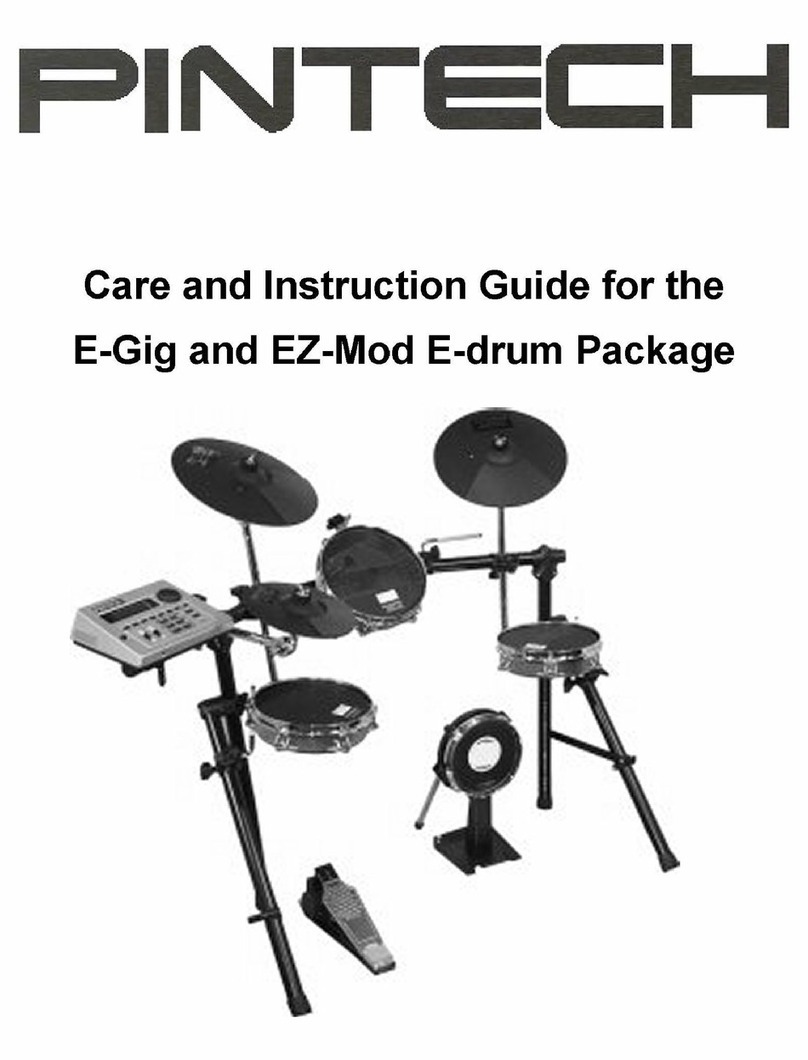
This
Digital
Drum
Bank
00-10
can
be
used
with
a
shoulder
strap.
The
strap
is
stored
in
the
side
of
the
package.
Attach
it
as
follows:
Contents
.
Nomenclature....................
esee
.
Playing
Back
the
Demonstration
.....
How
To
Use The
Auto
Rhythm
СесПОП
AA
евреи
.
Taking
Advantage
Of
Manual
Percussion
...........................
.
Programming
Your
Own
Rhythm
Pattern
Adding
More
Effect..
.
Using
MIDI
Capability.
.
External
Jacks..........
Optional
Accessories..
.
Taking
Care
Of
Your
Digital
Drum
Bank
.
Specifications
DONO
m
Aa
oma
e
o
=
Dieses
Digital
Drum
Bank
DD-10
kann
mit
einem
Schulterriemen
verwendet
werden.
Den
Gurt
finden
Sie
seitlich
in
der
Packung.
Befestigen
Sie
ihn
so:
Inhalt
1.
Bezeichnung
der
Teile.........
2.
Demonstrations-Wiedergabe
...
3.
Verwendung
der
Sektion
Auto
Rhythm...
4.
Ausnützen
der
Móglichkeiten
von
Manual
Percussion
.........................
5.
Programmieren
von
eigenen
Rhythmusmustern
..........................
.
Und
noch
mehr
Effekte.........
.
Gebrauch
der
MIDI-Fáhigkeiten
.
.
Externe
Buchsen
..................
.
Sonderzubehör
.................
.
Pflege
des
Digital
Drum
Bank.
js
.
Technische
Daten
...........................
=
ооо
J
е
‚юм
|
On
peut
se
servir
de
la
batterie
numérique
DD-10
avec
une
bandouliére,
placée
sur
le
cóté
de
P’emballage.
La
fixer
de
la
façon
suivante:
Table
des
matiéres
.
Nomenclature
2.
Démonstration
3.
Utilisation
de
la
section
du
rythme
automatique
.........................
4.
Avantages
des
percussions
таппие!Їе$..........................................
5.
Programmation
de
motifs
rythmiques
personnels
6.
Ajout
d'effet...............
7.
Utilisation
de
la
fonct
8.
Prises
externes................
9.
Accessoires
en
option
....
10.
.
Entretien
de
la
batterie
numérique
..14
|
11.
врестсайопв.
нн
Este
banco
de
batería
digital
DD-10
puede
emplearse
con
una
correa
de
bandolera.
La
correa
se
encuentra
al
lado
del
paquete.
Colóquela
como
se
indica:
Indice
1.
Nomenclatura
...............................
2.
Reproducción
de
demostración
..........
3.
Cómo
emplear
la
sección
de
ritmos
automáticos
..........
cesses
4.
Cómo
sacar
partido
a
la
percusión
manual...........................
5.
Programación
de
sus
propios
patrones
rítmicos
...........................
6.
Adición
de
más
efecto:
7.
Empleo
de
la
capacidad
de
MIDI
8.
Tomas
externas.....................
9
0
.
Accesorios
opcionales
.
Cuidado
de
su
banco
de
batería
e
О
see
